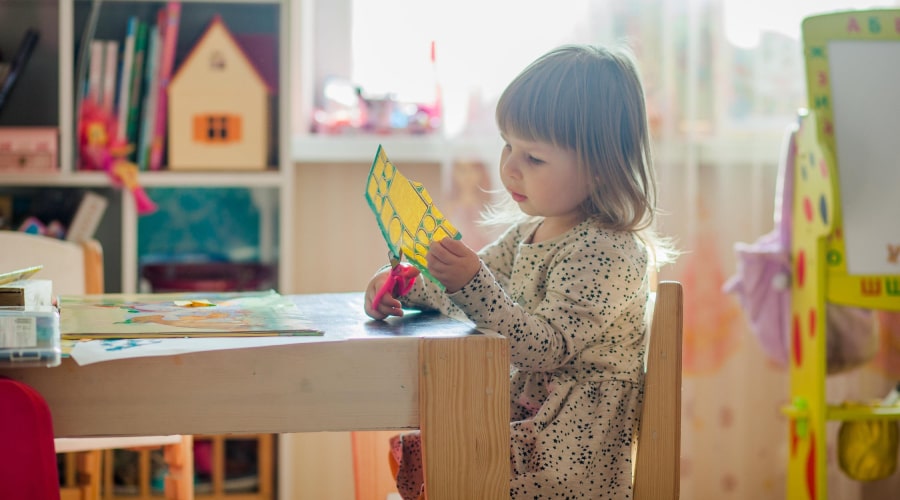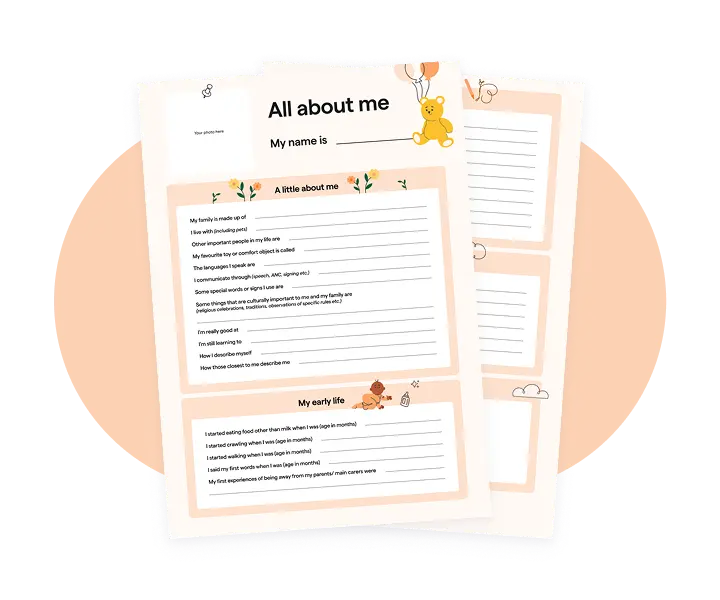settings
children
With Famly since
That first day of school is a magical one. The brand new, slightly too big school jumper, the bright eyes and the bushy tail. Oh, and don’t forget the mandatory picture at the front door to mark the occasion!
Starting school is a big deal - the little ones are suddenly a head taller, ready to make friends all by themselves and dip their toes into the big wide world.
But have you ever asked yourself why we send them off at so young an age? Is it because they’re really ready to learn? Or did we just decide that early is…better?
In England, children as young as 4 start in Reception class, which is meant to be a continuation of the EYFS, before starting formal schooling at 5. In Scotland and Northern Ireland, Primary 1 is from age 4 upwards. Scottish political parties are currently pushing to raise the starting age to 7, and there are many reasons why.
When we break it down, very young children go from a small setting environment to a busy, structured formal education. It’s a massive change for them. And from difficulties in emotionally coping with school, to pressure on teachers to push baseline assessments on our youngest, there’s an awful lot to unpack.
I’ll dive into why formal education is being pushed down to our youngest in Reception class, how other countries are doing it, and if we should be focusing our efforts elsewhere.

A Victorian start
The age children start school in the UK dates all the way back to the Victorian age. Putting children in school as young as possible protected them from hard labour like working in the mines.
The younger they started school, the less chance they’d have of being sent to work. But it’s 2021, and we’re no longer sending children up chimneys. So, is it time to reverse this decision to actually give children even more of their childhood back?
“A lot of the reasoning is socio-economical instead of educational,” Caroline Wright tells me, who is the Early Childhood Director of Bright Horizons, former Ofsted inspector and researcher in child development. . “It also stems from the post-war period when we wanted to get women back into the workplace and build up the country economically.” Children were starting school at 5 in 1941. 80 years later, we’re still in the same place
And it doesn’t stop there. Funding also plays a huge role in the reason we send children off to school earlier than almost all other European countries.
“Schools need children to come to school,” says Caroline. “They bring funding with them that schools are dependent on.” So parents are being encouraged to send their children earlier to secure funding - which doesn’t scream educational values or children’s wellbeing.
Children’s wellbeing
Cambridge-based researcher David Whitebread highlights the lack of educational benefits. His research overwhelmingly shows that children need more play, and less formal learning when they aren’t ready for it.
The negative consequences include mental health issues, and a lack of emotional and cognitive development when children are sent to a formal learning environment instead of allowing them to flourish through play.
And that isn’t just guesswork. According to a 2017 NHS survey, 1 in 8 children (that’s 13%) aged between 5 and 19 in England and Wales had at least one mental health disorder. That’s an awful lot of 5-year-olds with a diagnosed mental health issue.
The new school surroundings can be incredibly overwhelming for 4- and 5-year-olds. From remembering where the bathroom is, to being surrounded by hundreds of other children of all ages - it’s very different from a lot of small nursery settings.
“A lot of children at 5 have a real difficulty in just sitting still. Physiologically their muscles and bones need to flex and move,” says Caroline. From a noisy, play-focused environment to concentrating for up to six hours a day, it’s an awful lot to ask of our youngest - and some of them just aren’t emotionally ready.
So is raising the school age to 7 the answer to nurturing emotional and psychological wellbeing?

A glimpse at Finland
Early education looks very different in each country. And when we talk about raising school ages, all heads usually turn to Scandinavia, where children don’t start formal schooling until the age of 6 or 7.
Finland is a success story that other countries deeply admire, and they are consistently ranked as having one of the best educational systems in the world, as well as their spectacular mental health rates. It sounds like a dream come true - and that we should be racing to adopt it.
But before we jump on the bandwagon and claim that it’s only down to raising the school starting age, we need to do some digging.
"We need to understand what kindergarten and Reception really looks like in other countries before we jump on it,” says Caroline.
From the age of 10 months onwards, Finnish children are given care that consistently values the individual child, and a large amount of this is funded by local authorities and the state.
The majority of fees for early years and a mandatory year of pre-primary education (when a child is 6) are covered by the state or local authority. If families are above a certain income threshold, they pay a maximum of around £250 per month for child care, which also includes meals.
This means that Finnish children are entitled to around 6 years of consistent, heavily funded, regulated care, and all early years teachers are university qualified.
If we’re trying to compare the UK, access and rights to funding are vastly different. The Early Years sector is still battling for better recognition and more funding, whereas Finland places it at the heart of society. “It’s like comparing apples and pears,” says Caroline.
The big ideas

Will raising the age fix our problems?
All roads are pointing to raising the school age immediately. But will adding another year or two onto the EYFS fix our problems? For Caroline, the main problem isn’t the age children go to school, but the top-down pressure that’s cutting the EYFS short.
Reception class, where the average age is about 4, is an extra year for children to become developmentally and emotionally ready to start formal schooling at the 5 - 6 mark. It’s a continuation of the EYFS. But the pressure to ‘prepare’ them for KS1 is trickling down to our youngest.
“When children get to reception class, we restrict their ability to play. We should be giving them the benefit of that additional year to become developmentally and emotionally ready for the next stage,” she says. Which is exactly what Finland does.
UK schools all have their own unique ethos, and all want to perform well in Ofsted ratings. And, more often than not, the pressure for good ratings pushes formal learning down.
“The observation in the PVI sector for EYFS is an entire day, whereas reception classes get 15 minutes. Inspectors don’t see the full impact in 15 minutes,” says Caroline. It’s understandable that teachers are anxious to impress, and to prepare for those baseline assessments.
Our curriculum is extremely similar to the Finnish model - we both place an incredibly high importance on the value of play, the unique child and independent learning. But we’re cutting the foundational stage short - and raising the age by a few years won’t necessarily fix that.
So before we start looking at raising school ages by another year or two, we should be placing the focus on reinforcing what we already have instead of chasing the Finnish dream.
-min.jpeg)
What can you do?
You have a lot of power in speaking for the sector, and there are ways to let your voice be heard to raise the status of Early Years and its importance in properly preparing children for formal schooling:
- Continue to campaign to raise the status of EY - the fact that reception classes are continually seen as KS1 preparation classes means that the Early Years needs more space, more funding, and more recognition. The more recognition the sector gets, the higher the chance the little ones can have the best foundations for schooling. And the Duchess of Cambridge is on a mission to do just that.
- Scottish political parties are pushing for the age of children to be raised to 7 with a heavy focus on a play-based curriculum. Can you reach out to your local MP to discuss raising the profile of the Early Years sector in your area? You may think your voice is small, but you have a massive power in leading changes where they’re needed.
- Campaigns like Too Much Too Soon are continually pushing to reassess when the little ones are ready to start school. Supporting campaigns are a great way to have your voice heard, and join the wider conversation. Ren Kapur MBE is launching her new campaign, which aims to raise the profile of the Early Years and secure better funding for all.
Try learning journals for free
Add observations, and build digital learning journals to share with families instantly. All with your completely free 14-day trial.
Get started









